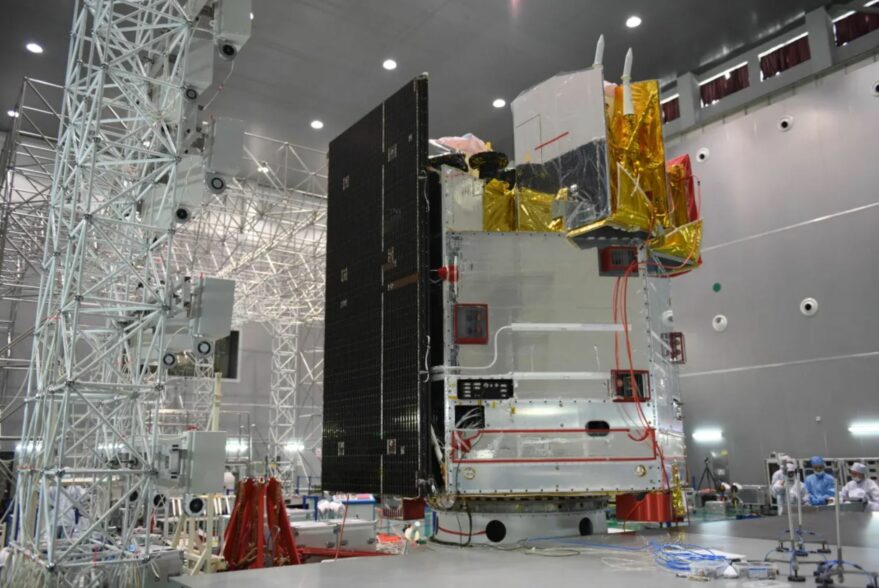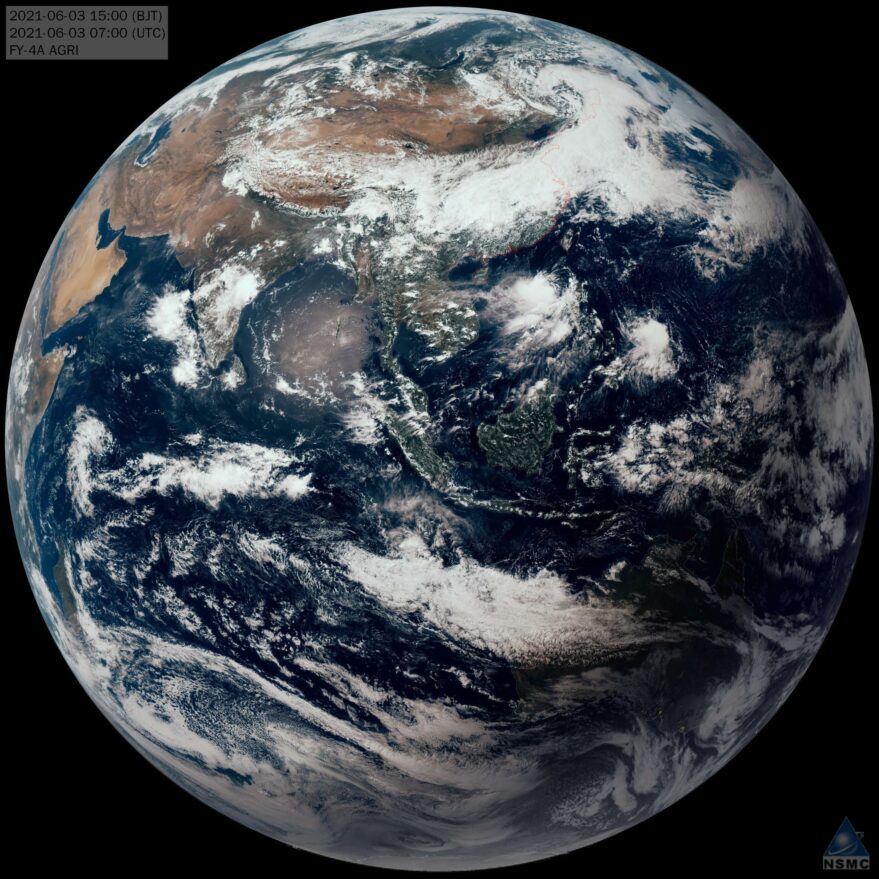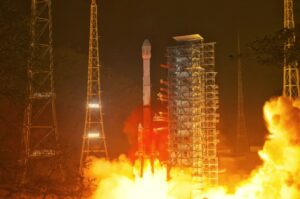A Long March 3B lifted off from pad 2 at the Xichang Satellite Launch Center, southwest China, at 12:17 p.m. Eastern June 2, or just after midnight June 3 local time.
The launch was declared successful by Deng Hongqin, director of Xichang Satellite Launch Center, within an hour of liftoff. The first public announcement followed from the contractor, the China Aerospace Science and Technology Corp. (CASC).
The 5,400-kilogram Fengyun-4B satellite will be used for weather analysis and forecasting, and environmental and disaster monitoring.
Payloads include a Geostationary Interferometric Infrared Sounder, radiation imager, space environment packages for sensing high, medium and low energy particles, an imaging telescope for X-ray to extreme Ultraviolet activity monitoring, a geostationary high-speed imager and a lightning mapping imager.
The new payloads will improve China’s high-frequency monitoring of the atmosphere and observation ability of a number of smaller-scale and shorter-duration weather phenomena.
Fengyun-4B will operate in geostationary orbit at an altitude of 35,786 kilometers above the Earth for seven years, according to the China Meteorological Administration (CMA). This is an improvement over the five-year lifetime of the Fengyun-4A, launched late 2016.

Fengyun-4B will be positioned over 123.5 degrees East, according to the World Meteorological Organization.
The satellite and launcher were developed by the Shanghai Academy of Spaceflight Technology (SAST) and the China Academy of Launch Vehicle Technology (CALT) respectively, both major CASC subsidiaries.
The Fengyun-4 series meteorological satellites are a new generation of geostationary weather satellites. China began launching the predecessor Fengyun-2 series in 1997.
The Yuanwang 5 tracking ship assisted the launch from a position in the Pacific Ocean. The ship also supported the launch of the Tianhe space station module in late April.
The vessel is part of the Yuanwang, or “Long View”, class of ships used to provide tracking and support for satellite and other launches. The vessels are operated by the China Satellite Maritime Tracking and Control Department under the People’s Liberation Army.
The CMA is responsible for the construction and operation of the Fengyun satellite’s ground application system.
Chinese launch activities
The launch was China’s 16th of 2021, which includes a space station module and cargo and propellant supply missions.
CASC plans to launch more than 40 times this year. Other Chinese state-owned and commercial companies are also planning launches.
China’s annual launch rate has increased markedly in recent years. China launched an average of 7.6 times per year between 2005-2009. The country conducted 37 launches in 2018, seeing China lead the world in launch rate for the first time.
Xichang, already one of the world’s most active launch centers, underwent renovations in 2020 aimed at improving annual launch capacity from around 17 to about 30 launches.
A new commercial spaceport is also to be constructed at Ningbo, eastern China, to support growing launch activities. China’s coastal Wenchang launch center is also expected to expand to facilitate commercial launches.




